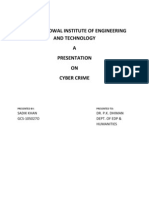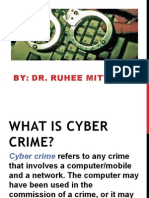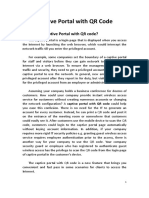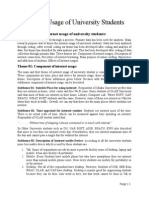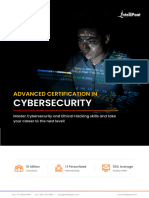0% found this document useful (0 votes)
3 views17 pagesComputer Project
The document discusses the rapid growth of the internet in India and its associated opportunities and risks, particularly focusing on cybercrime. It categorizes cybercrimes into three major types: against persons, property, and government, detailing various examples and forms of cybercrime such as cyberstalking and cyberterrorism. Additionally, it provides tips on how to protect oneself from cybercrime, emphasizing the importance of online security measures.
Uploaded by
Rakesh Mad ManCopyright
© © All Rights Reserved
We take content rights seriously. If you suspect this is your content, claim it here.
Available Formats
Download as PPT, PDF, TXT or read online on Scribd
0% found this document useful (0 votes)
3 views17 pagesComputer Project
The document discusses the rapid growth of the internet in India and its associated opportunities and risks, particularly focusing on cybercrime. It categorizes cybercrimes into three major types: against persons, property, and government, detailing various examples and forms of cybercrime such as cyberstalking and cyberterrorism. Additionally, it provides tips on how to protect oneself from cybercrime, emphasizing the importance of online security measures.
Uploaded by
Rakesh Mad ManCopyright
© © All Rights Reserved
We take content rights seriously. If you suspect this is your content, claim it here.
Available Formats
Download as PPT, PDF, TXT or read online on Scribd
/ 17






